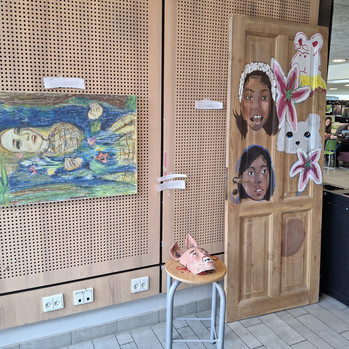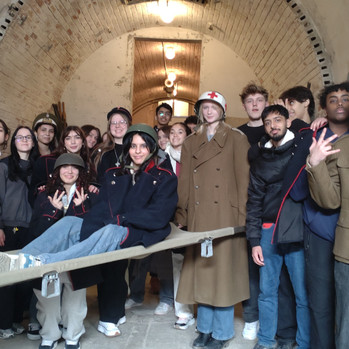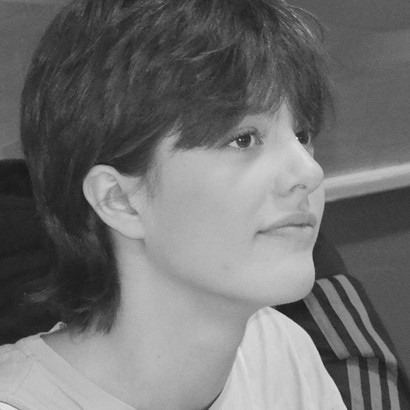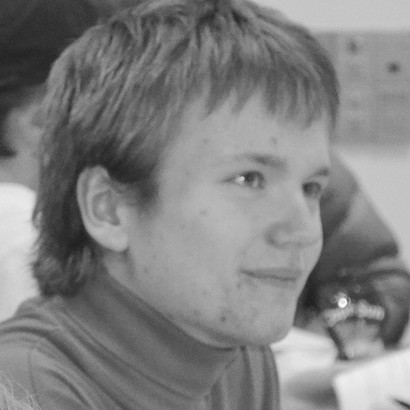You are here
3i Biology HL
- Dissection
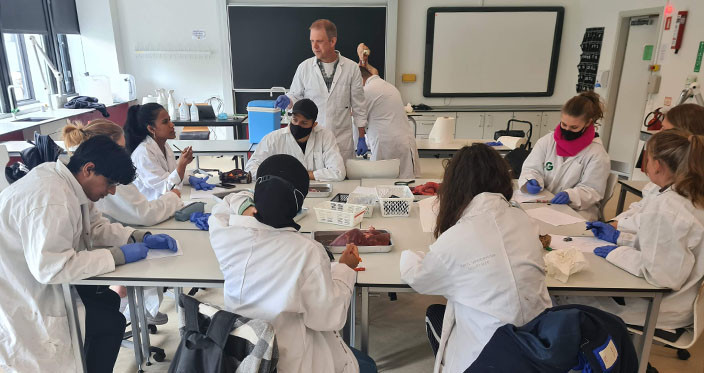
Our 3i biology students have recently come to the end of their lessons and are, today, sitting their final exam in Biology – the very last IB exam for some of them.
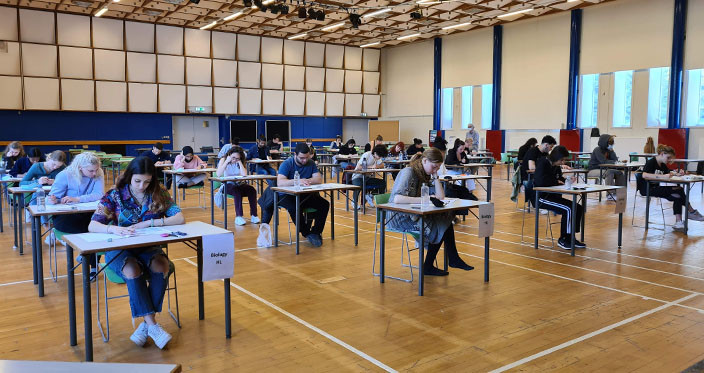
Higher level dissection lesson
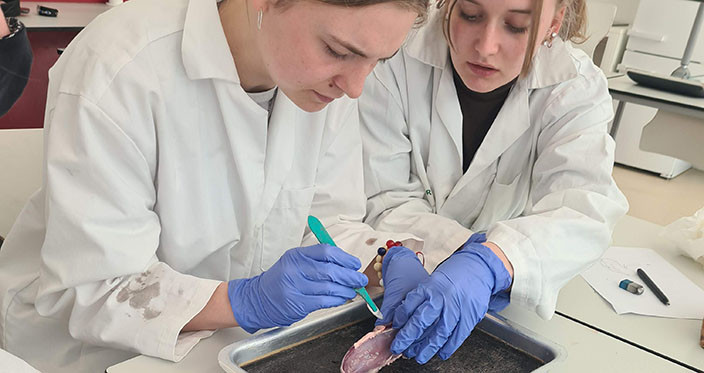
The Higher-level students spent their last modules revising the extensive syllabus and trying to combine overview with details. Human and animal anatomy and physiology is a large part of the programme, and students are learning about the structure and function of various organ systems, such as the respiratory system, the cardiovascular system, the locomotory system, the digestive system and the reproductive system and the processes they are responsible for. There are very strict safety precautions to the kind of practical exercises we can do in IB Biology, e.g., we are not allowed to work with any kind of body fluids, and there are very strict ethical regulations about experimental animals. Our 3i cohort have, furthermore, been hampered by the covid-pandemic which has led to extensive use of virtual teaching and further constraints on the kind of practical exercises we have been able to do. Therefore, it was a real valuable offer that one of the students who lives on a farm could bring fresh organs (heart, lungs, liver, and kidneys) from a freshly butchered pig to the school, so that we could do a dissection class and, for once, try to work with real biological material.
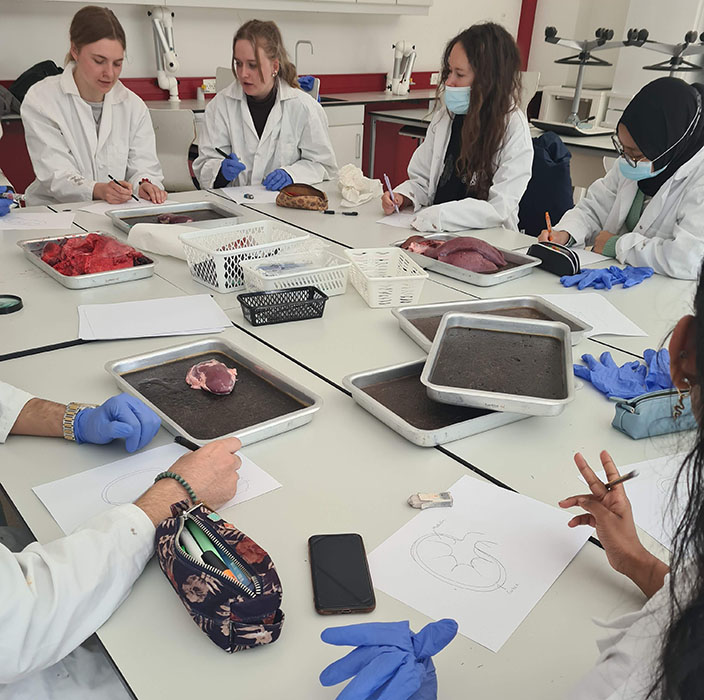
Teacher’s notes on the dissected organs
The heart and lung
The heart you buy in the supermarket often has had the upper part removed, but this heart was intact and had the large vessels (aorta and vena cava) still attached to it. Furthermore, it was connected to the lungs, even though the pulmonary artery and vein was missing. Looking at the structures in combination gave a valuable insight into how the respiratory and cardiovascular systems interact, and opening the heart gave a good view of the heart's internal structure with various types of valves leading to and from the four chambers. To be able to draw and annotate a human heart, and to explain how blood flows to and from the heart with no other aid than plain memory is just one of the many demanding skills that our IB students must possess before they sit their exams.
The kidneys
The structure of the kidney and the process of urine formation is a typical IB biology HL topic, and one that requires a good memory and drawing skills to explain. Even though the vital structures cannot be seen with the naked eye, dissecting a kidney helps understanding the process of ultrafiltration and selective reabsorption of water and solutes, and will, hopefully, assist our students during their exams.
The liver
The structure of the liver and its function in metabolism is one of those subtopics that we normally deal with if Option D: Animal Physiology is selected. This year, the choice of one of four options has been left out due to the prolonged closing of IB Schools all over the World so we did not get into many details about this organ, except its role in producing bile for the gall bladder and its function as a storage of glycogen.
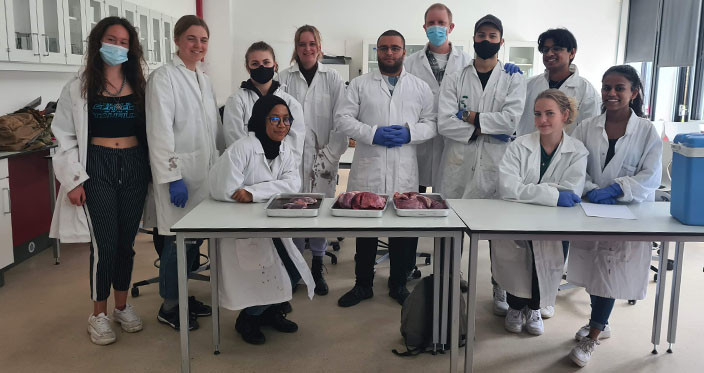
Ja/CM/19MAY21

